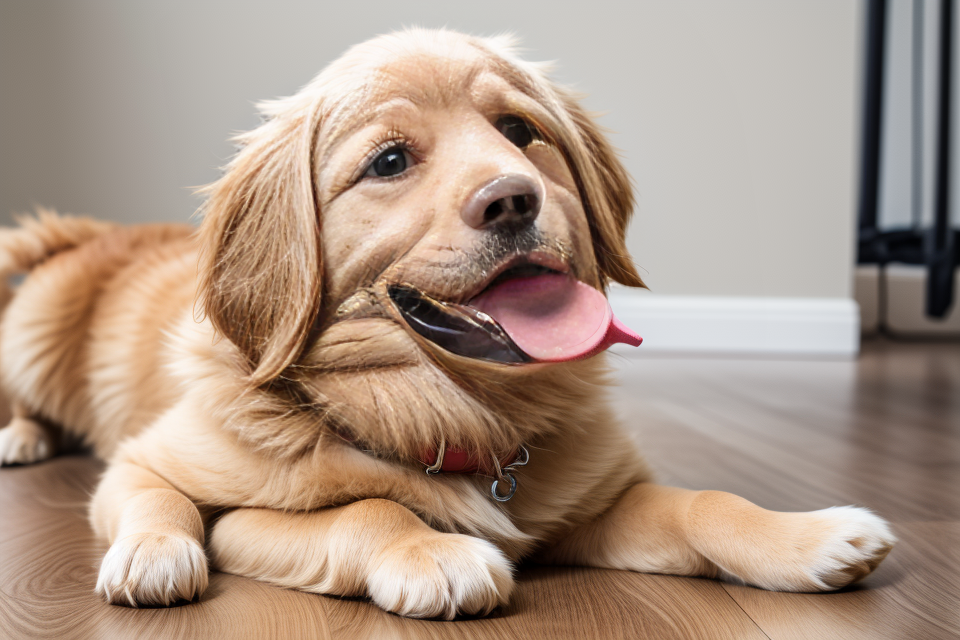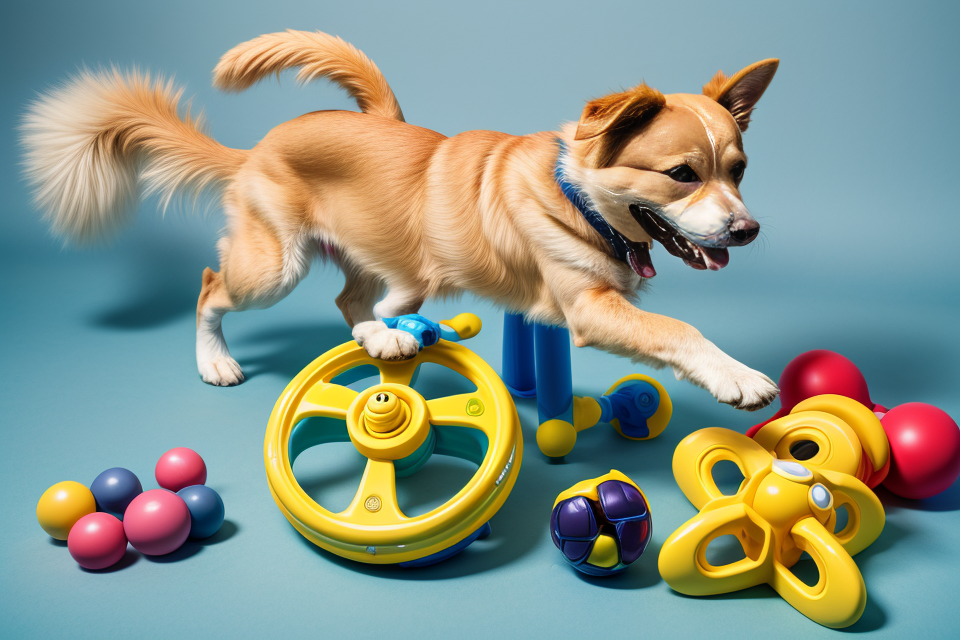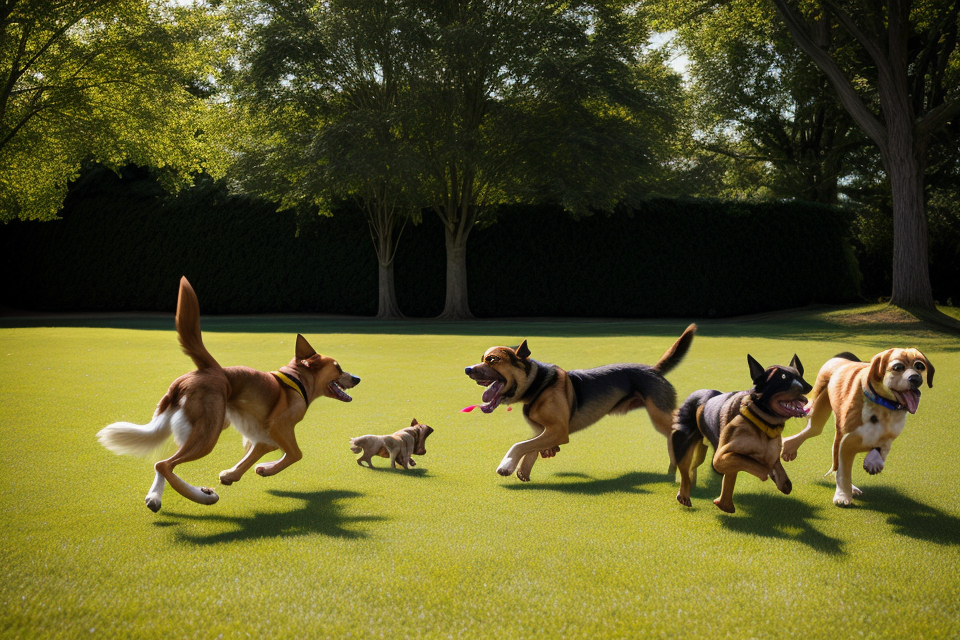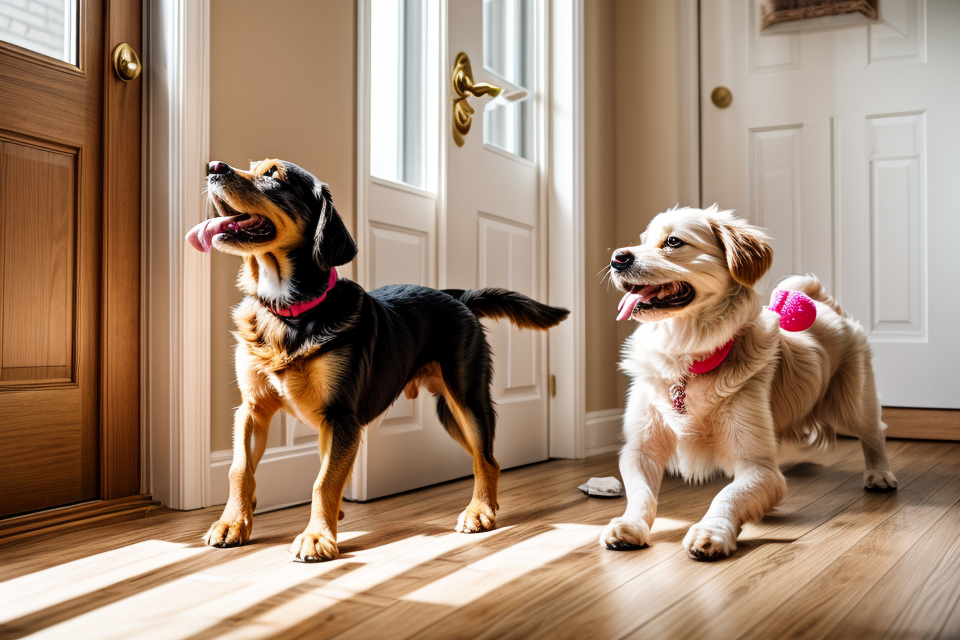Is your furry friend reluctant to part with their beloved toys? Are you tired of constantly battling over who gets to keep the toy? Fear not, for there is a way to train your dog to give up toys without any drama. In this step-by-step guide, we will show you how to teach your dog to drop the toy on command, making playtime more enjoyable for both you and your pet. So, get ready to learn the tips and tricks to have a toy-free playtime with your four-legged friend.
Step 1: Identify the Problem Toy
How to determine which toy is the problem
When it comes to training your dog to give up toys, the first step is to identify the problem toy. Here are some tips on how to determine which toy is causing the issue:
- Observe your dog’s behavior: Pay close attention to your dog’s behavior when they have the toy in question. Do they become possessive or aggressive when you try to take it away? Do they hide with the toy and growl when you try to get it? These are all signs that the toy is a problem.
- Look for signs of possessiveness or aggression: Dogs will often show signs of possessiveness or aggression when it comes to their favorite toys. They may growl, snap, or even bite when you try to take the toy away. If your dog displays any of these behaviors, it’s likely that the toy is a problem.
- Pay attention to the context of the behavior: Take note of when and where your dog displays possessive or aggressive behavior. Is it only when they have a certain toy? Does it only happen in certain locations, such as in the park or at home? This information can help you narrow down which toy is causing the issue.
By following these tips, you can identify the problem toy and take the first step towards training your dog to give it up.
The importance of identifying the problem toy
Identifying the problem toy is crucial to the success of your training efforts. It helps to prevent the escalation of behavior issues and ensures that your focus is on the right toy.
Here are some reasons why identifying the problem toy is important:
- Escalation of behavior issues: If your dog becomes possessive over a particular toy, it can lead to aggression, barking, and other unwanted behaviors. Identifying the problem toy can help prevent these issues from escalating.
- Focused training efforts: By identifying the problem toy, you can direct your training efforts towards that specific toy. This will save you time and energy and help you achieve your goal more quickly.
- Prevention of reinforcing bad behavior: If you try to take away a toy that your dog is not possessive over, it may reinforce the idea that possessiveness is a good thing. By identifying the problem toy, you can avoid reinforcing bad behavior.
Overall, identifying the problem toy is an essential first step in training your dog to give up toys. It sets the stage for focused and effective training efforts.
Step 2: Set Clear Rules and Boundaries
Establishing rules for toy possession
Training your dog to give up toys requires setting clear rules and boundaries for toy possession. This includes defining the rules, setting consequences for not following the rules, and ensuring consistency among all members of the household.
Defining the Rules
To begin, it is important to clearly define the rules for toy possession. This means specifying which toys are allowed and which are not, as well as the circumstances under which your dog can and cannot have access to these toys. For example, you may decide that your dog is only allowed to have certain toys in specific areas of the house, or that they are only allowed to play with toys during certain times of the day.
Setting Consequences
Once you have defined the rules, it is important to set consequences for not following them. This means that if your dog does not give up a toy when asked, there will be a consequence that follows. This consequence could be something as simple as removing the toy from your dog’s possession, or it could be a more severe consequence, such as removing all toys for a period of time. It is important to be consistent with the consequences, so that your dog understands that there are consequences for not following the rules.
Ensuring Consistency
Finally, it is important to ensure that everyone in the household is consistent when it comes to enforcing the rules for toy possession. This means that all members of the household should be on the same page when it comes to the rules and the consequences for not following them. If different members of the household have different expectations or consequences, this can confuse your dog and make it more difficult to train them.
Setting boundaries for toy possession
Training your dog to give up toys requires setting clear rules and boundaries for toy possession. This involves designating specific areas for toy play, teaching your dog to drop the toy when asked, and supervising playtime to prevent problems.
- Designate specific areas for toy play:
To prevent your dog from becoming possessive of toys, it’s important to designate specific areas for toy play. This can be done by setting up a designated area in your home where your dog can play with toys. This area should be clearly marked and easily accessible to your dog. By doing this, you can prevent your dog from becoming possessive of toys in other areas of the house. - Teach your dog to drop the toy when asked:
Another way to set boundaries for toy possession is to teach your dog to drop the toy when asked. This can be done by using positive reinforcement techniques such as praise, treats, and playtime. When your dog has a toy, say the command “drop it” in a firm and confident tone. When your dog drops the toy, praise them and give them a treat. Repeat this process until your dog learns to drop the toy on command. - Supervise playtime to prevent problems:
Supervising playtime is another important step in setting boundaries for toy possession. This can help prevent problems such as aggression, possessiveness, and destruction of toys. When your dog is playing with a toy, observe their behavior and intervene if necessary. If your dog becomes possessive or aggressive, remove the toy and redirect their attention to a different toy or activity.
By setting clear rules and boundaries for toy possession, you can help your dog learn to give up toys when asked and prevent problems during playtime.
Step 3: Desensitize Your Dog to the Toy
What is desensitization?
Desensitization is a training technique that involves gradually exposing your dog to the problem toy in a controlled and safe environment. The goal of desensitization is to teach your dog to associate the toy with positive experiences rather than aggression or possessiveness.
The process of desensitization involves several steps:
- Start by placing the toy in a location where your dog cannot reach it. This could be in another room or behind a barrier such as a gate or baby gate.
- Gradually move the toy closer to your dog, but do not let them have it. Keep it out of reach until they are no longer showing signs of aggression or possessiveness.
- Once your dog is no longer showing signs of aggression or possessiveness, reward them with positive reinforcement such as treats or praise.
- Repeat this process until your dog is completely desensitized to the toy and no longer shows signs of aggression or possessiveness when they see it.
It’s important to note that desensitization should be done gradually and at a pace that is comfortable for your dog. If your dog becomes agitated or shows signs of aggression, stop the process and backtrack to a previous step.
Desensitization is a powerful tool in helping your dog learn to give up toys and can be used in conjunction with other training techniques such as positive reinforcement and distraction. By teaching your dog to associate the toy with positive experiences, you can help them overcome their possessiveness and aggression towards toys.
How to desensitize your dog to the toy
Start with high value treats and positive reinforcement
When it comes to training your dog to give up their favorite toys, it’s important to start with high value treats and positive reinforcement. This means that you should offer your dog something they really want, such as a piece of chicken or a favorite treat, whenever they drop the toy you want them to give up. By doing this, you’re rewarding your dog for making the right choice and helping them associate giving up the toy with something positive.
Gradually increase your dog’s exposure to the toy
Once your dog is comfortable giving up the toy for a high value treat, you can gradually increase their exposure to the toy. This means that you should slowly increase the amount of time your dog spends with the toy and the distance between you and your dog when they have the toy. For example, if your dog gets really excited when they see a toy, you might start by keeping the toy out of reach and giving your dog a high value treat when they’re calm. Then, you can gradually move the toy closer to your dog and increase the amount of time they spend with it.
Teach your dog to drop the toy on cue
Finally, once your dog is comfortable giving up the toy, you can teach them to drop the toy on cue. This means that you should give your dog a command, such as “drop it,” and then reward them for dropping the toy. You can repeat this process several times until your dog learns to drop the toy on cue. This will help your dog understand that giving up the toy is something they should do when you ask them to.
Step 4: Teach the “Drop It” Command
Why teaching the “Drop It” command is important
Teaching your dog the “Drop It” command is essential for a number of reasons. Firstly, it can help prevent dangerous situations. For example, if your dog is holding a toy or object that is dangerous for them to chew on, you can use the “Drop It” command to get them to let go of it. This can help prevent injuries or illnesses that can be caused by chewing on inappropriate objects.
Secondly, teaching the “Drop It” command can improve obedience and communication between you and your dog. When your dog learns to obey the “Drop It” command, they will be more likely to listen to other commands as well. This can help build a stronger bond between you and your dog, as they will come to trust and respect you as a leader. Additionally, being able to communicate effectively with your dog can help prevent misunderstandings and behavior problems down the line.
How to teach the “Drop It” command
- Start in a quiet, low-distraction environment
- Choose a quiet room or area where your dog can focus on you and the training session without any distractions.
- Turn off any electronics or loud appliances that may interrupt the training process.
- Ensure that other pets or people are not present during the training session.
- Use high value treats and positive reinforcement
- Use treats that your dog finds highly desirable, such as chicken, cheese, or beef.
- Give your dog the treat immediately after they drop the toy.
- Praise and give affection to your dog when they drop the toy.
- Gradually increase the distance and distractions during training
- Start by standing close to your dog and holding a high value treat in your hand.
- When your dog looks at you, say “Drop it” and offer the treat.
- As your dog becomes more comfortable with the command, slowly move further away from them while holding the treat.
- Gradually increase the distractions in the environment, such as other people or pets, and continue to use the “Drop it” command and positive reinforcement.
- Continue training sessions in different environments and with different distractions to ensure that your dog can reliably drop the toy on command in any situation.
Step 5: Practice and Reinforce the Behavior
The importance of practice
Strengthens the “Drop It” command
One of the primary benefits of practicing the “Drop It” command with your dog is that it strengthens the command itself. Repetition helps your dog to associate the command with the action of dropping the toy, making it more likely that they will respond to the command in the future. Additionally, consistent practice helps to build trust between you and your dog, as they come to understand that you are a reliable and predictable leader.
Helps your dog generalize the behavior to different situations
Practice is also important because it helps your dog to generalize the behavior to different situations. For example, if your dog is able to reliably drop a toy in a quiet room with no distractions, practicing in increasingly distracting environments will help them to learn that they need to drop the toy even when there are other exciting things happening around them. This can be especially helpful if your dog tends to get overly excited or easily distracted by their surroundings.
Overall, the importance of practice in training your dog to give up toys cannot be overstated. By consistently reinforcing the desired behavior and helping your dog to generalize the behavior to different situations, you will be well on your way to raising a well-mannered and obedient dog.
How to practice and reinforce the behavior
Practicing the behavior in different environments and with different distractions is crucial to ensure that your dog can reliably give up toys on command in various situations. Start by practicing in quiet, low-distraction environments and gradually increase the level of distraction as your dog becomes more confident. This can include practicing in a busy park, with other dogs and people around, or in a noisy room with music playing.
Using high value treats and positive reinforcement is an effective way to reinforce the behavior. High value treats are treats that your dog really likes, such as pieces of chicken or cheese. Positive reinforcement means rewarding your dog with a treat or praise immediately after they give up the toy. This helps your dog associate giving up the toy with positive things happening, and it reinforces the behavior.
Playing with other toys is also an effective way to prevent boredom and keep your dog engaged during training. If your dog is playing with a toy while you’re practicing the behavior, they may be less interested in the toy you’re asking them to give up. Switching to a different toy or playing a game of fetch or tug can be a great way to keep your dog engaged and motivated during training.
It’s important to be consistent and patient during the training process. It may take several weeks or even months for your dog to reliably give up toys on command. Be sure to reward every attempt and provide plenty of positive reinforcement to keep your dog motivated and engaged. With time and practice, your dog will learn to give up toys on command and be a well-mannered and obedient companion.
Step 6: Manage Your Dog’s Toys
How to manage your dog’s toys
Effective management of your dog’s toys is crucial in maintaining a healthy and balanced environment for your furry friend. Here are some guidelines on how to manage your dog’s toys:
- Rotate toys to keep them interesting
Dogs can quickly become bored with their toys, which can lead to destructive behavior. To prevent this, it’s essential to rotate your dog’s toys regularly. By introducing new toys and removing old ones, you can keep your dog interested and engaged. You can also consider hiding some of the toys in strategic locations around the house for your dog to find.
- Store toys safely when not in use
When not in use, it’s important to store your dog’s toys safely to prevent accidents and injuries. You can store them in a designated area, such as a toy box or a closed cabinet. It’s also important to ensure that the storage area is inaccessible to your dog to prevent them from getting injured by sharp edges or small parts.
- Dispose of damaged or unsafe toys
It’s crucial to dispose of damaged or unsafe toys to prevent your dog from getting injured. Toys that are worn out, broken, or have small parts that can be easily removed should be disposed of immediately. It’s also important to keep an eye on recalls of certain toys that may pose a safety risk to your dog.
By following these guidelines, you can help ensure that your dog’s toys are safe, interesting, and accessible only when you want them to be.
The benefits of managing your dog’s toys
- Prevent possessiveness and aggression
- By limiting the number of toys your dog has access to, you can reduce the likelihood of them becoming overly possessive and aggressive over their belongings.
- This not only keeps your dog safe, but also makes it easier for them to learn how to share and give up their toys when you ask them to.
- Encourage appropriate play and chewing
- Dogs naturally have a strong desire to chew and play with their toys.
- By providing your dog with a variety of appropriate toys, you can encourage them to engage in positive play and chewing behaviors, rather than resorting to destructive or inappropriate chewing.
- This can help prevent behavioral problems such as boredom and anxiety, and can strengthen the bond between you and your dog.
- Keep your dog safe and happy
- Managing your dog’s toys can also help keep them safe.
- By removing hazardous or unsafe toys from your dog’s reach, you can prevent accidental injuries or health problems.
- Additionally, by providing your dog with a selection of appropriate toys, you can ensure that they always have something to keep them entertained and happy.
FAQs
1. Why is it important to train my dog to give up toys?
Training your dog to give up toys is important for several reasons. Firstly, it helps prevent aggression and possessiveness over toys, which can lead to fights with other dogs or even biting. Secondly, it teaches your dog to respect your authority and to comply with your commands. Lastly, it can also make playtime more enjoyable for both you and your dog, as your dog will be more likely to share toys and take turns.
2. What is the best way to train my dog to give up toys?
The best way to train your dog to give up toys is through positive reinforcement training. This involves rewarding your dog for giving up the toy, rather than punishing them for not doing so. Start by holding a toy in front of your dog and encouraging them to take it. As soon as they grab the toy, say “good dog” and give them a treat. Repeat this process several times until your dog starts to associate giving up the toy with positive reinforcement.
3. How long does it take to train my dog to give up toys?
The amount of time it takes to train your dog to give up toys can vary depending on the individual dog and their temperament. Some dogs may learn this skill quickly, while others may take longer. Be patient and consistent with your training, and don’t expect your dog to learn this overnight. With positive reinforcement and repetition, your dog will eventually learn to give up toys on command.
4. What if my dog won’t let go of the toy?
If your dog won’t let go of the toy, it’s important to remain calm and patient. Don’t try to force the toy from their mouth, as this can make them more possessive and aggressive. Instead, try distracting them with another toy or treat, and reward them for letting go of the toy. If your dog continues to be possessive over toys, it may be helpful to consult with a professional dog trainer for further guidance.
5. Can I still play with my dog while training them to give up toys?
Yes, you can still play with your dog while training them to give up toys. In fact, playing with your dog is an important part of the training process, as it helps build a strong bond between you and your dog. During playtime, encourage your dog to give up toys by praising them and giving them treats when they do. This will help them associate giving up toys with positive experiences and make the training process more enjoyable for both you and your dog.



